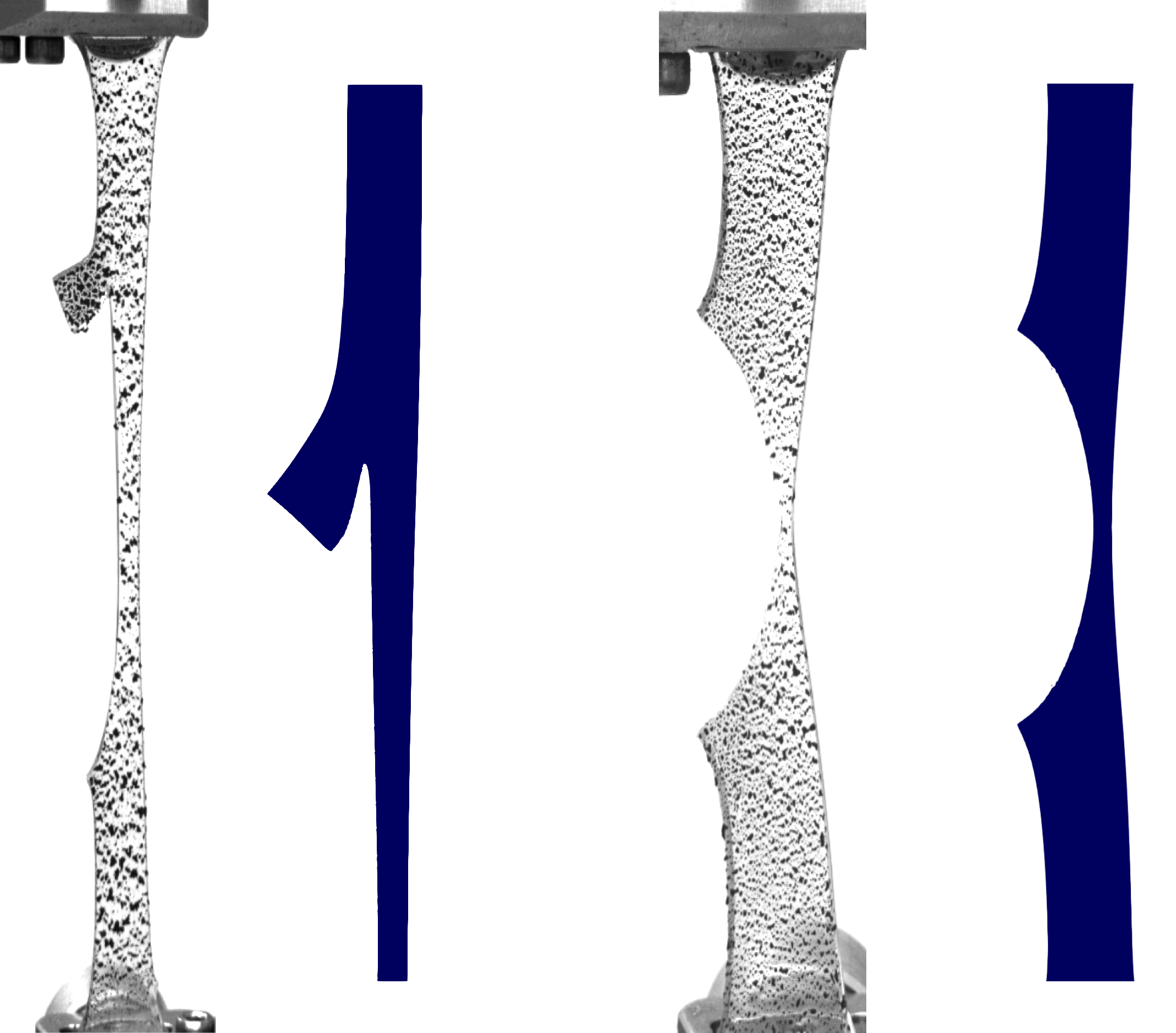Crosslinking degree variations enable programming and controlling soft fracture via sideways cracking
Published in Physics and Mathematical & Computational Engineering Applications
What causes anisotropic fracture in an isotropic elastomer? Under certain conditions, a crack propagates in a (sideways) direction parallel to the loading direction rather than perpendicularly in the (forward) direction of the notch. Then, the crack arrests and the material ahead of the crack can be further deformed enabling giant stretchability. We provide control over fracture anisotropy and we introduce a novel virtual testbed to direct the fracture in soft structures.
Our research efforts show that the tendency of a crack to propagate sideways in a two component elastomer increases with the degree of crosslinking. We show that fracture anisotropy can be modulated during the synthesis of the polymer through the mixing ratio of the raw phases.

To assist the investigations, we construct a novel phase-field model for sideways fracture where the critical energy release rate is related to the crosslinking degree. Unlike existing approaches in the literature, we propose a phenomenological model that integrates deformation-induced fracture anisotropy as the fundamental mechanism driving lateral cracking. Our approach renders a crack surface density (γ) unaltered and introduces an anisotropic critical energy release rate in the format of a material function Gc = Gc (F,φ), with F and φ deformation gradient and damage order parameter, respectively.
Eventually, we propose a roadmap with composite soft structures with low and highly crosslinked phases that allow for control over fracture, arresting and/or directing the fracture. The smart combination of the phases enables soft structures with enhanced fracture tolerance and reduced stiffness.
In previous works the authors leveraged multiphysics to modulate fracture behaviour in soft materials. The authors investigated ultra-soft dielectric elastomers and reported electro-mechanical triaxiality stress states at the crack tip that delay crack propagation (see Moreno-Mateos el al. in International Journal of Engineering Science, (2024), 195, 104008). Further, the authors described for the first time the beneficial effect of magnetic remanent fields in hard-magnetic ultra-soft magneto-rheological elastomers and the magnetic crack closure mechanism (see Moreno-Mateos et al. in Journal of the Mechanics and Physics of Solids, (2023), 173, 105232).
Follow the Topic
-
npj Computational Materials

This journal publishes high-quality research papers that apply computational approaches for the design of new materials, and for enhancing our understanding of existing ones.
Related Collections
With Collections, you can get published faster and increase your visibility.
Recent Advances in Active Matter
Publishing Model: Open Access
Deadline: Sep 01, 2026
Computational Catalysis
Publishing Model: Open Access
Deadline: Dec 31, 2025





Please sign in or register for FREE
If you are a registered user on Research Communities by Springer Nature, please sign in